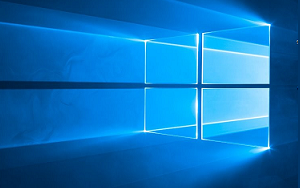Discover the various methods to connect your Android device to a TV, enhancing your viewing experience by leveraging the features of modern technology.
Connecting Your Android Device to a TV: A Comprehensive Guide
With the proliferation of streaming services and digital content, it's increasingly common for users to want to connect their Android devices to a TV to enjoy content on a larger screen. Whether you want to stream videos, play games, or give a presentation, connecting your Android device to a TV can significantly enhance your viewing experience. This article provides a detailed guide on the different methods available to connect your Android device to a TV.
1. Using an HDMI Cable
One of the simplest ways to connect your Android device to a TV is by using an HDMI cable. This method provides a direct connection, ensuring high-quality audio and video transmission. Here's how you can do it:
- Check for Compatibility: Ensure that your Android device supports HDMI output. Most modern devices require a USB-C to HDMI adapter.
- Purchase an Adapter or Cable: Buy a USB-C to HDMI adapter or a cable that matches your device's port (Micro-USB or USB-C).
- Connect the Adapter: Plug the adapter into your Android device.
- Connect to TV: Attach an HDMI cable to the adapter and connect the other end to an available HDMI port on your TV.
- Select Input Source: Switch the TV's input source to the appropriate HDMI port.
Once connected, your TV should mirror your Android device's display.
2. Utilizing Wireless Streaming
Wireless streaming is a convenient method to connect your Android to a TV without the clutter of cables. There are several options available:
2.1 Chromecast
Google Chromecast is a popular device for streaming content wirelessly. Follow these steps to connect:
- Set Up Chromecast: Connect the Chromecast device to your TV's HDMI port and a power source.
- Install Google Home: Download and open the Google Home app on your Android device.
- Configure Device: Follow the setup instructions in the Google Home app to connect the Chromecast to your Wi-Fi network.
- Cast Content: Tap the Cast icon in supported apps (like YouTube or Netflix) to start streaming to your TV.
2.2 Miracast
For devices that support Miracast, follow these steps:
- Access Settings: On your Android device, go to Settings > Display > Cast Screen.
- Enable Wireless Display: Turn on the wireless display feature.
- Select TV: Choose your TV from the list of available devices to start mirroring your screen.
2.3 Using Smart TV Features
If you own a Smart TV, it may have built-in features to connect with Android devices:
- Enable Screen Mirroring: Access your TV's settings to enable screen mirroring.
- Connect Device: On your Android, navigate to Settings > Display > Cast Screen and select your TV.
3. Using MHL or SlimPort
Mobile High-Definition Link (MHL) and SlimPort are technologies that enable HDMI-like connections through your device's charging port:
- Check Compatibility: Verify if your Android device supports MHL or SlimPort.
- Purchase Necessary Cables/Adapters: Obtain the appropriate cable/adapter for your device.
- Connect to TV: Attach the adapter to your device and connect via HDMI to your TV.
- Switch TV Input: Use your TV remote to switch to the corresponding HDMI input.
These connections will allow you to mirror your Android's display on your TV.
4. Leveraging USB Connections
Though less common, some TVs allow media playback via USB:
- Check TV Capability: Ensure your TV has a USB input that supports media playback.
- Connect via USB: Use a USB cable to connect your Android device to the TV.
- Select USB Input: Switch your TV's input source to USB and follow any on-screen instructions.
5. Troubleshooting Connection Issues
If you encounter issues while trying to connect your Android device to a TV, consider the following troubleshooting steps:
- Check Connections: Ensure all cables and adapters are securely connected.
- Update Software: Make sure both your Android device and TV have the latest software updates.
- Restart Devices: Restart both your Android device and TV.
- Consult Manuals: Refer to the user manuals for your Android device and TV for specific instructions.
6. Conclusion
Connecting your Android device to a TV is a straightforward process when you choose the method that best suits your devices and needs. Whether through a wired connection with HDMI or a wireless option like Chromecast or Miracast, each method has its advantages. This guide provides you with the necessary steps to enjoy your Android content on the big screen, enhancing your overall media experience.







